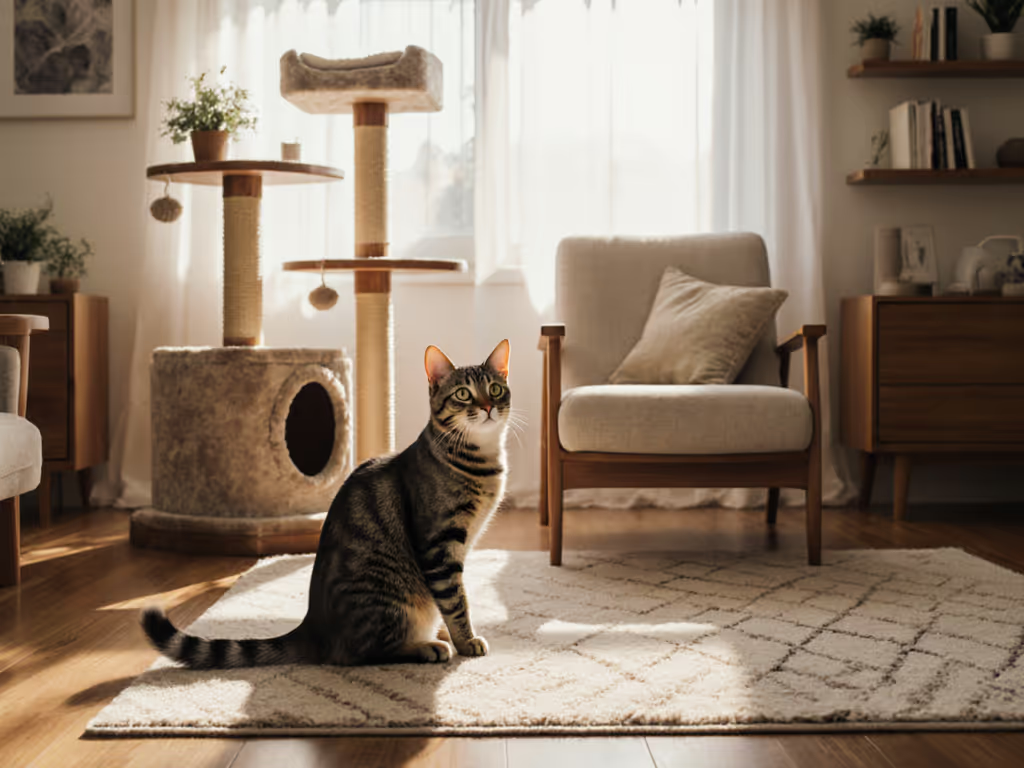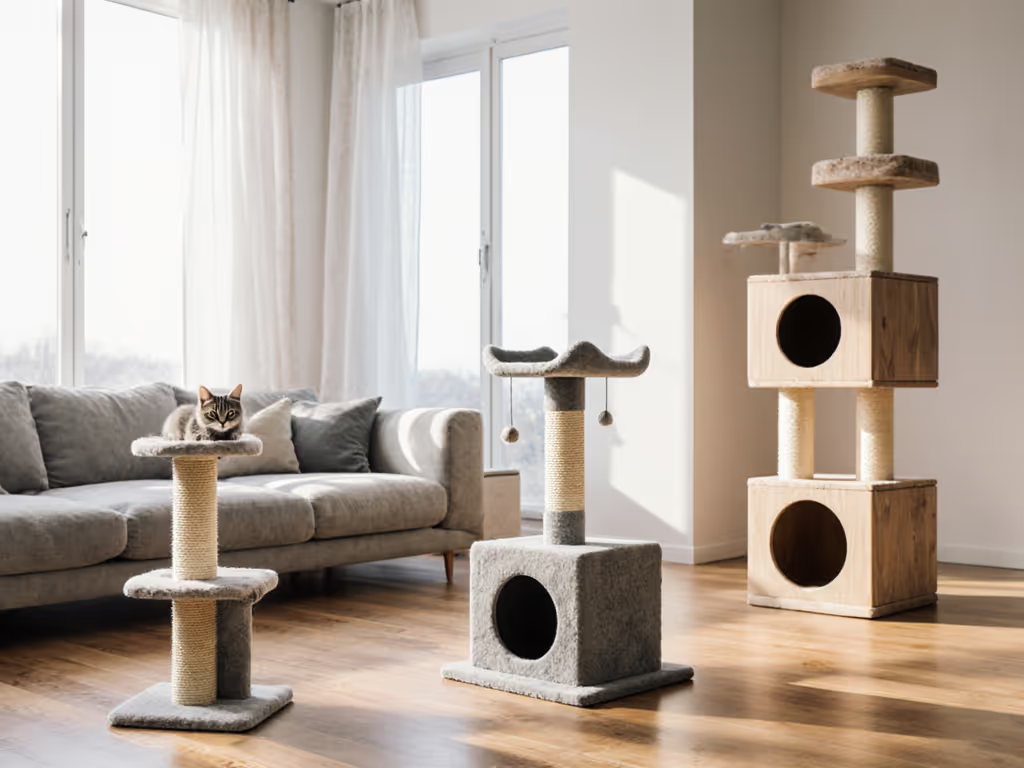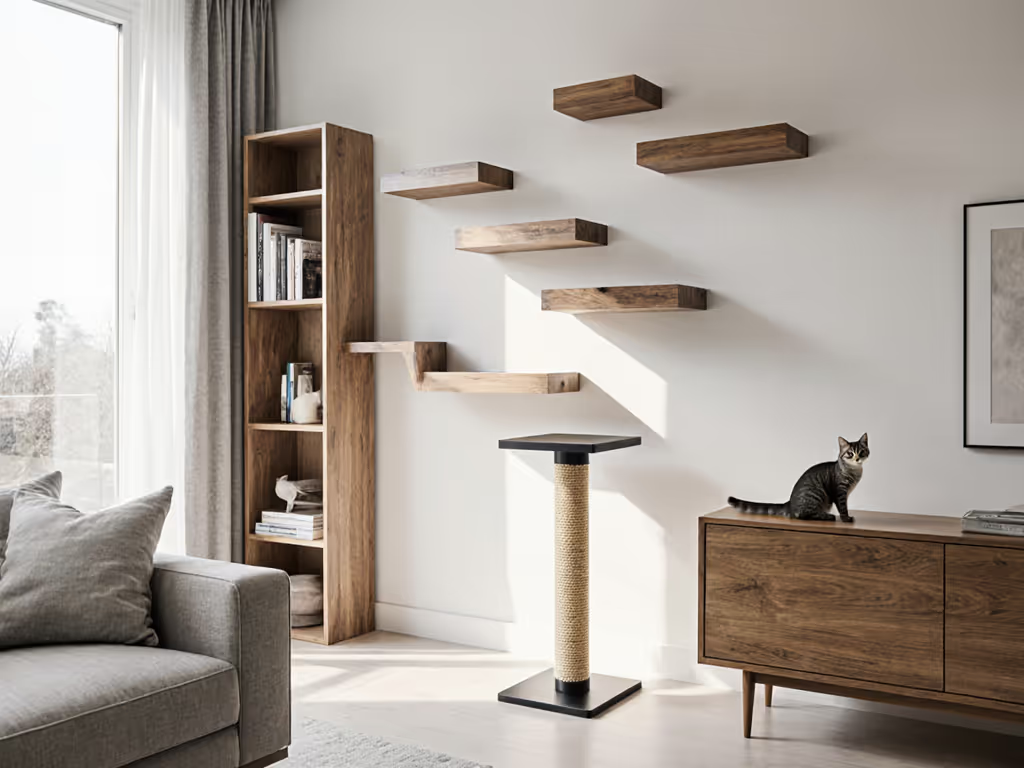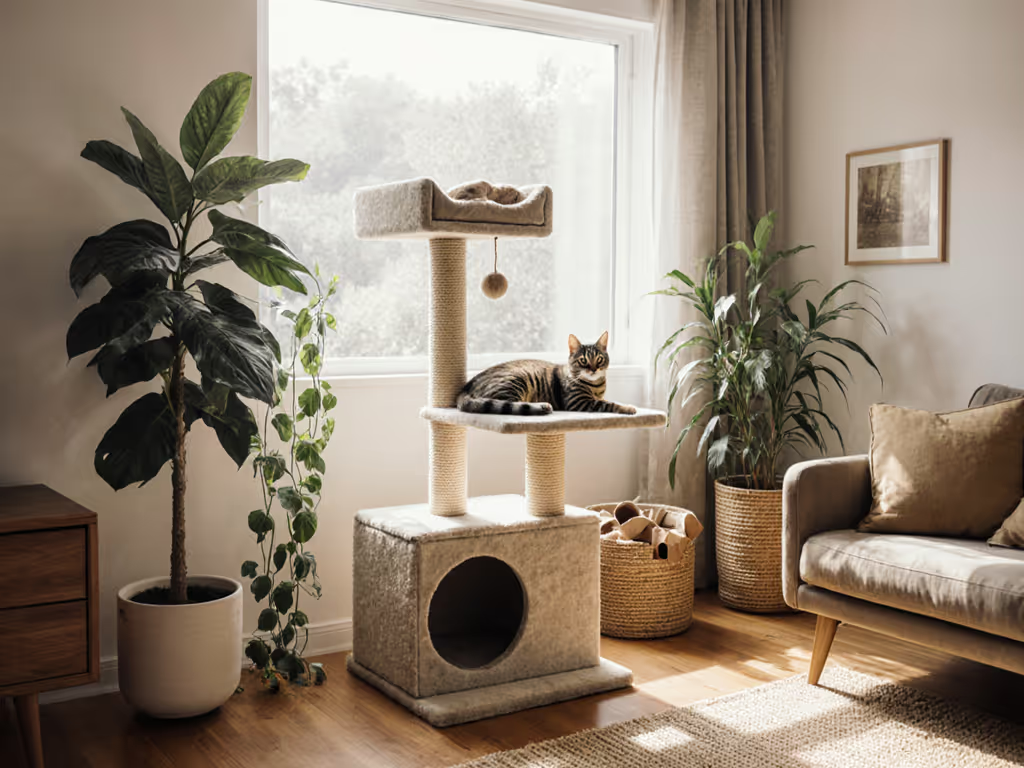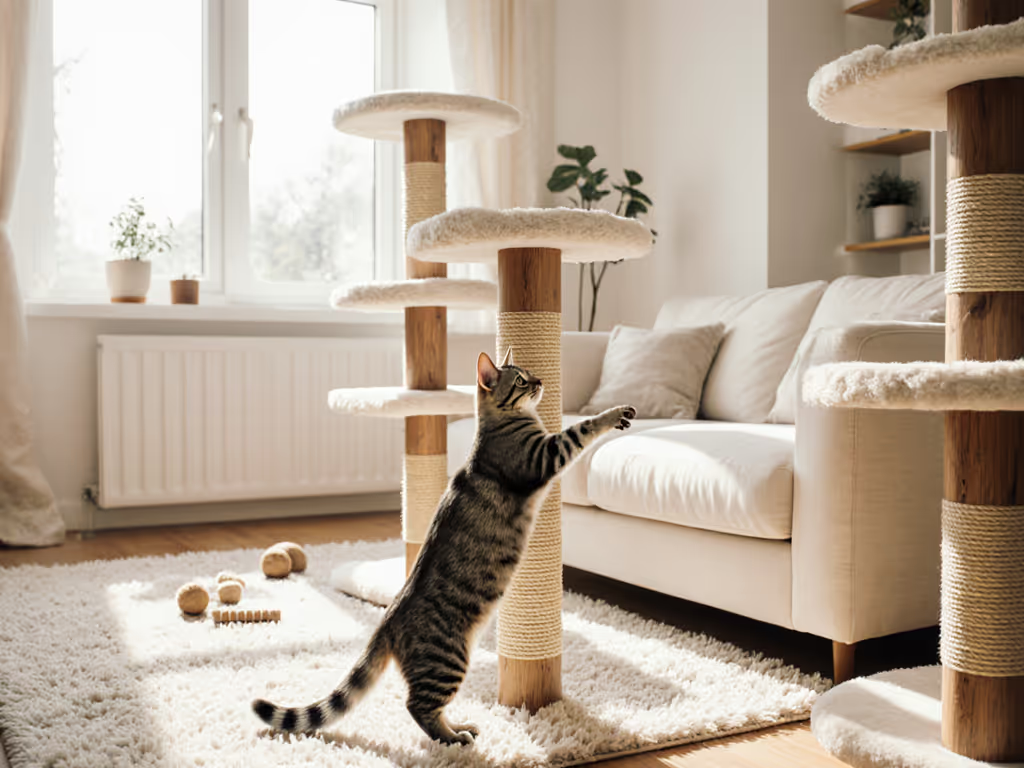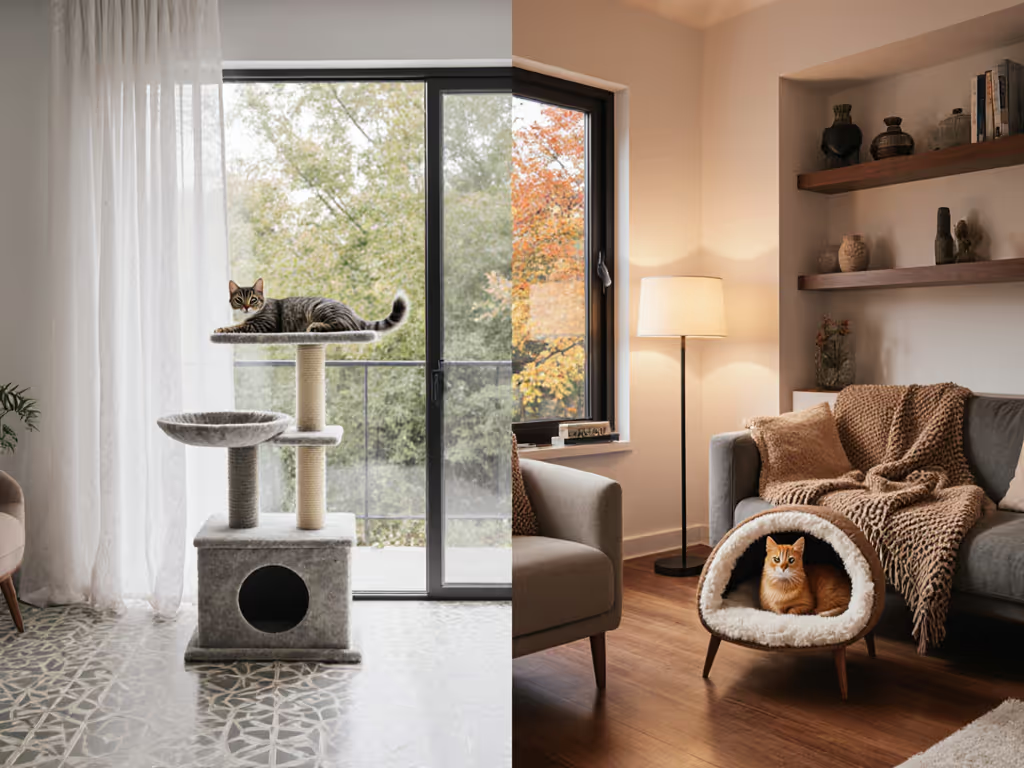Modern cat guardians increasingly seek age appropriate cat furniture that evolves alongside their feline companions (not just generic towers that dominate living rooms). Understanding cat life stage furniture requirements reveals a truth I live daily: form meets instinct. Pieces that uplift rooms and enrich routines become true home co-authors, not clutter. When properly designed, cat furniture stops being a compromise and starts harmonizing with your spatial flow, color scheme, and storage needs while honoring your cat's biological roadmap. Let's analyze how furniture choices should transform across your cat's lifespan, ensuring aesthetics and function coexist gracefully.
Life Stage Logic: Mapping Furniture to Feline Development
Cats aren't static roommates. Their physical capabilities, confidence levels, and instinctual drives shift dramatically from kittenhood to senior years. Smart design anticipates these changes without sacrificing your apartment's cohesion. Ignoring this evolution leads to frustrated cats (and frustrated owners redecorating offices around wobbly towers). For a deeper framework that ties design choices to feline behavior and your floor plan, see our behavior-guided space planning guide.
Kittens & Young Adults: Energy, Exploration, and Foundation-Building
Kittens (0-3 years) demand kitten furniture enabling high-energy exploration within your room's rhythm. They'll leap toward ceiling fans if vertical space is scarce, but poorly placed perches disrupt sightlines and feel jarring. Instead, anchor 12-18" wide shelves 8-10" apart along empty walls above existing furniture (like bookcases or credenzas). This creates a "highway" that follows the room's natural eye-line, not one that clashes with it.
Critical spatial note: A kitten's ideal jump height is 24-36" from their launch point, never force leaps exceeding 48". Measure twice, anchor once.
Place sisal-wrapped posts (minimum 32" tall) next to sofa arms, never isolated in walkways, to redirect scratching toward social zones. Opt for neutral-toned, powder-coated steel bases that echo your coffee table legs. Watch how a 6-month-old calico tests stability: if she wobbles, she'll avoid it, seeking your rug instead. Durable, well-integrated pieces prevent early destructive habits.
Mature Cats (3-10 Years): Confidence, Territory, and Refined Comfort
This prime life stage often brings territorial behaviors if resources feel unstable. Your challenge? Provide security without visual bulk. A single 60" tall tower in a corner screams "pet zone," but modular components blend smarter:
- Vertical perches: Install one deep perch (24"x24") at 42-48" height, eye level when seated, to mirror your cat's love of "shared" lounging. Cover in performance fabric matching your throw pillows.
- Concealed retreats: Repurpose under-bed storage into hollowed-out "dens" with removable fleece liners. Paint the exterior to match your baseboards.
- Scratching zones: Choose wide, low-profile posts (16"x5") flanking entryways. Cats guard thresholds instinctively; place these where they naturally patrol.
Color-aware design matters here. A beige cat tree beside taupe walls feels intentional; a bright blue one looks like an afterthought. Mature cats thrive when furniture reads as part of the room's story, providing territory markers that complement your aesthetic rather than compete with it.
Senior Cats (10+ Years): Accessibility, Joint Support, and Gentle Transitions
Aging cat needs demand subtle recalibration. Arthritis makes leaps painful, yet removing all elevation causes distress. Cats feel vulnerable on the floor. The fix? Cat furniture for mobility issues that maintains verticality through lowered complexity:
- Replace 60" towers with wide, carpeted steps (max 6" rise, 10" depth) leading to a single 24" high platform beside your bed or sofa.
- Swap sisal posts for horizontal scratchers with soft edges at resting height.
- Add orthopedic mats inside existing cubbies (measuring 20"x14" to fit standard openings).
Never eliminate height entirely. As Victoria Road Animal Hospital's data indicates, cats over 12 still use perches 87% of the time, but only when access requires <= 3 gentle steps. A senior tabby won't scale a wobbly ladder, but she will claim a stable, low-rise ledge beside your reading chair if it's covered in familiar, sink-in fabric matching your upholstery.
Spatial Strategy: The Harmony Checklist
Regardless of life stage, great cat furniture passes three spatial tests:
- Traffic Flow Preservation: Walkways should feel 18" wider than actual measurement (e.g., a 36" path reads as 54"). Place furniture where it guides movement, doesn't block it.
- Color & Texture Synergy: Choose neutrals or muted tones that pick up one accent color from your space (e.g., a dove gray cat tree against charcoal walls with rust throw pillows).
- Dual-Purpose Integration: Ottomans with hollow storage double as scratch zones; bookshelves gain perches via added ledges.
Retailers often ignore these, selling "cat furniture" as isolated objects. But cats don't inhabit zones, we share spaces. A well-designed perch beside your workstation satisfies your cat's need for oversight while functioning as a sculptural shelf for your journals. This synergy reduces clutter and satisfies the underlying desire for a home where every element feels chosen, not tolerated.
Final Verdict: Design That Grows With You Both
Truly age appropriate cat furniture isn't about buying new gear every three years. It's designing flexible zones from day one that adapt through minor tweaks: swap sisal wraps for carpeted steps, add ramps to existing towers, or clip on lower perches. Measure twice, anchor once (not just for safety, but to ensure every addition respects your room's proportions).
When furniture honors both your aesthetic standards and your cat's biological journey, something remarkable happens. The sunlit corner no longer feels like a "cat area", it becomes your shared reading nook where a senior tom naps on a heated mat inside your media cabinet, calibrated perfectly to his lowered mobility needs. This is the harmony apartment dwellers crave: a home where human and feline needs aren't opposing forces, but co-authors of a space that evolves, enriches, and endures. Form meets instinct, not as compromises, but as collaborators.
